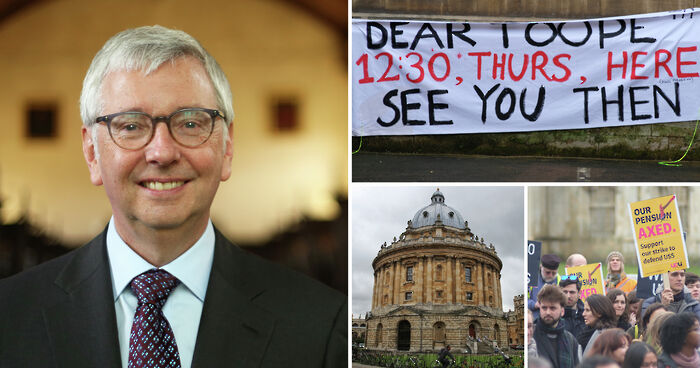Who are the Rebel Architects Faction?
The radical political group of architecture students was formed in solidarity with striking staff and have become known for their bold visual demonstrations

A group of architecture students at Cambridge has collected as a radical political movement aligned with striking staff, calling themselves the Rebel Architects Faction, or RAF, and seeking to “build a better future in the most literal sense of the term”, as one student put it.
Most recently, the group constructed a large red picket fence – which appears to be their signature colour – and chained it to Senate House last Tuesday. They have also hung red banners, which read ‘Strike to win!’ and ‘Support our staff’, across the architecture department.
Its tongue-and-cheek approach to social activism forms a core of the RAF dynamic. A spokesperson for the group – under the pseudonym Luther Blissett – suggests “forwarding the VC coursework for marking”, and that students save some money with a “summer term rent strike” as means of protest.
The group draws inspiration from the ideas of Internationale Situationniste (IS), an anti-authoritarian Marxist organisation of intellectuals and surrealist artists formed in 1957. The IS’s theory of creating a spectacle as a critique of advanced capitalism may be seen in an (albeit muted) form in the RAF’s construction of a large red picket fence which members chained to Senate House last Tuesday.
An RAF spokesperson referred to an essay published in the journal Internationale Situationniste which describes the “combination of parody and seriousness [that] reflects the contradictions of an era in which we find ourselves”, in which “the most serious ventures are masked in the ambiguous interplay between art and its necessary negation”.
Commenting on the ongoing staff strikes, to which the group was formed in response, RAF believes the strike’s failure would mark “a point of no return for the total extension of the neoliberal project” into universities, while a victory would “open the way for nothing less than the total reimagining of the University as a site of learning and common good”.
The RAF’s ‘seriousness’ is evident, however, beyond its grandiloquent statements on the overthrowing of capitalism. It is rooted in a concern for the future of architecture as a discipline, troubled by “graduate [students] with unpayable debts expected to labour for free”, a growing “mental health crisis”, and a discipline seemingly “concerned only with profit” rather than for the benefit of society.
The RAF receives little funding, relying primarily on scrap project materials from the department, as expensive protests would “just be taking money from our education – it wouldn’t really make sense”.
Architecture students have also incorporated political activist ideas into their work, according to Ingrid Schröder, a design fellow in the faculty. Speaking to Varsity, she explained that the lack of department teaching has “become an opportunity for testing new approaches and demonstrating to supervisors how they want to work”, and that it is a chance for students “to understand the impact of their activism on how we approach design ideas”.
The highly secretive branch of Cambridge student-led activism hopes that students are encouraged by “the mass dissemination of our ideas” in taking upon themselves to protest the strikes, while they remain evasive over what, if anything, their next protest might involve.
 Features / Should I stay or should I go? Cambridge students and alumni reflect on how their memories stay with them15 December 2025
Features / Should I stay or should I go? Cambridge students and alumni reflect on how their memories stay with them15 December 2025 News / Cambridge study finds students learn better with notes than AI13 December 2025
News / Cambridge study finds students learn better with notes than AI13 December 2025 News / Dons warn PM about Vet School closure16 December 2025
News / Dons warn PM about Vet School closure16 December 2025 Comment / The magic of an eight-week term15 December 2025
Comment / The magic of an eight-week term15 December 2025 News / News In Brief: Michaelmas marriages, monogamous mammals, and messaging manipulation15 December 2025
News / News In Brief: Michaelmas marriages, monogamous mammals, and messaging manipulation15 December 2025










